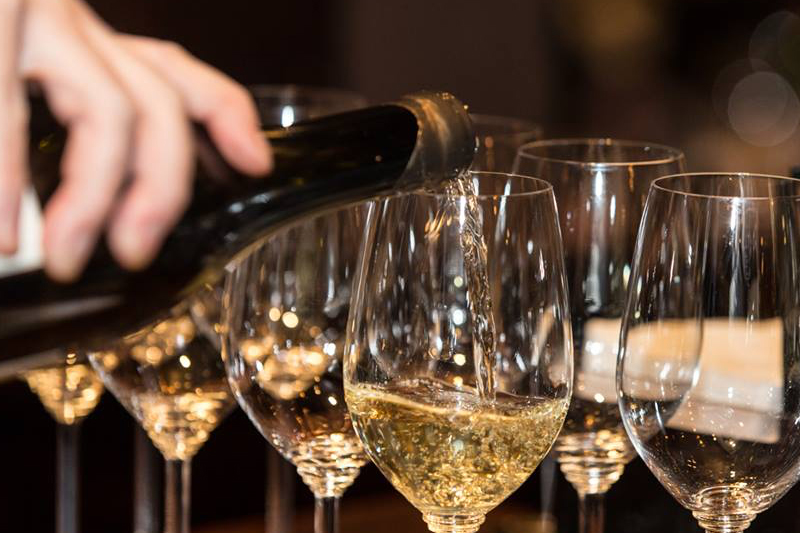Kaiken Malbec Reserva from the Apalta region of the Colchagua Valley in Argentina is definitely worth a look around $10. Goes great with venison, lamb or charred beef. Look for a complex bouquet of blueberry, cherry, sage and violets, On the palate, barrel spice (6 mos. on oak) and hints of white pepper. The cooler 2016 season caused a more crisp, floral wine with softer tannins and good fruit notes. Keep in mind that cooler usually means the grapes were not overripe. If you can locate the 2013, which I rated 91 points in 2015, it is perfect right now. I have seen some up in New Jersey at $10. For Malbecians, these are a steal.
Going low to high as follows, please avoid paying a ton for Grand Cru Red Burgundy. I just looked into the 96-point Domaine de la Romanee-Conti La Tache Monopole 2005 for a reader (an unnamed co-conspirator, if you will). It came in around $2,600. That's per bottle, folks; be still, my palpitating heart. Selling now $6,000. People who actually drink wine, who must have Grand Cru Red Burgundy, might take a look at Louis Jadot Grand Cru Bonnes-Mares 2010. You can buy a 6-pak 750 ml. for $1,600, 98 McD points, 19 by JR. Still dark-colored, good now thru 2030 at least. Nose is a cherry jubilee, smoked meat mouthful of dark fruit, rich and round. Don't take me wrong; the 2010 DRC is indeed spectacular, just not 22 times better. A far better option for my wallet is: fly to Portland for a few days. Drive to McMinnville or Newburg and stay in a vineyard inn, visit Chehalem Mountains and Ribbon Ridge. There are several centralized wine-tasting outlets in towns. Most producers are also happy to see you. Oregon reminds me of Napa and Sonoma in the 1990 era. Ship home four or five cases of your favs in brown paper boxes labeled olive oil or apple juice and put $1K back in your bank account.
Please hold up on Napa and Sonoma purchases. Just read an article by Liza Zimmerman, San Fran Chronicle, and not a dishonest media scoundrel like me. She quoted Anita Oberholster, co-op extension, UC Davis, as saying grapes from those regions "are showing some signs of smoke taint characteristics by taste." Zimmerman went on, "Despite the fact that Davis has its own experimental vineyards, Oberholster's research was based on wines made from fruit that she was given by wineries that choose not to use their fruit to make wine."
All that written, I'm not saying the crop is damaged, yet. Most of the best won't be released until later this year, and the ne plus ultra until 2019 or beyond. It will be interesting to see how the winemakers affected deal with the puzzle. Keep in mind there is a very large audience who actually enjoy "smoky" "charred barrel" and other such adjectival components.
By and large, most winemakers I have met are true craftsmen and won't wish to use tainted juice. However, these Cali regions are seeing considerable consolidation. The Wall Streeters, banks and big biz folks drink "hard likker" and 15 percent craft beer nowadays. These bosses with gimlet eyes for the bottom line may instruct boffins, "My way or the highway; the mortgage must be paid."
Closing on a better note, Heitz Martha's Vineyard aficionados may already be aware Joe Heitz sold Heitz Wine Cellars for about $180 million to Gaylon Lawrence Jr., a billionaire involved mostly in large-scale farming: Florida groves, lower Mississippi Delta properties, and banks in Tennessee, Arkansas and Missouri. Martha's Vineyard was not owned by Heitz but leased.
Joe Heitz was an icon; Heitz Wine Cellars did have 1,000 acres and a modest production facilty. One of the few Napa wineries that still gave free samples. Mr. Lawrence has hired Robert Boyd as president/CEO. Lawrence has an excellent reputation.
He rehabilitated Wilson, Ark., one of the towns he bought in the Mississippi Delta and is trying to remediate the land for organic farming.























































